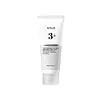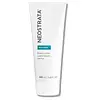What's inside
What's inside
 Key Ingredients
Key Ingredients

 Benefits
Benefits

 Concerns
Concerns

No concerns
 Ingredients Side-by-side
Ingredients Side-by-side

Water
Skin ConditioningPanthenol
Skin ConditioningButylene Glycol
HumectantPropanediol
SolventCaprylic/Capric Triglyceride
MaskingGlycerin
HumectantCetyl Ethylhexanoate
EmollientBehenyl Alcohol
EmollientOctyldodecanol
EmollientPhenyl Trimethicone
Skin ConditioningVinyldimethicone
1,2-Hexanediol
Skin ConditioningBis-Diglyceryl Polyacyladipate-2
EmollientPentylene Glycol
Skin ConditioningCaprylyl Methicone
Skin ConditioningCentella Asiatica Extract
CleansingPolyglyceryl-3 Methylglucose Distearate
EmulsifyingBetaine
HumectantC14-22 Alcohols
Emulsion StabilisingCeramide NP
Skin ConditioningPhytosterols
Skin ConditioningHydroxyethyl Acrylate/Sodium Acryloyldimethyl Taurate Copolymer
Emulsion StabilisingHydrogenated Rice Bran Oil
Skin ConditioningC12-20 Alkyl Glucoside
EmulsifyingAmmonium Acryloyldimethyltaurate/Vp Copolymer
Glyceryl Stearate
EmollientDimethiconol
EmollientGlyceryl Caprylate
EmollientSodium Stearoyl Glutamate
CleansingHydrogenated Lecithin
EmulsifyingGlyceryl Glucoside
HumectantAcrylates/C10-30 Alkyl Acrylate Crosspolymer
Emulsion StabilisingTromethamine
BufferingPolyglyceryl-10 Stearate
Skin ConditioningSodium Hyaluronate
HumectantEthylhexyl Olivate
Skin ConditioningDipropylene Glycol
HumectantSodium Acrylates Copolymer
Polyglyceryl-4 Oleate
EmulsifyingLinolenic Acid
CleansingPolyglyceryl-10 Laurate
Skin ConditioningSphingolipids
EmollientPhosphatidylcholine
Emulsifying4-Terpineol
MaskingAllantoin
Skin ConditioningEctoin
Skin ConditioningHyaluronic Acid
HumectantSqualane
EmollientLecithin
EmollientAsiaticoside
AntioxidantEscin
TonicMadecassic Acid
Skin ConditioningAsiatic Acid
Skin ConditioningBeta-Sitosterol
Emulsion StabilisingTremella Fuciformis Extract
HumectantCeramide AP
Skin ConditioningCeramide EOP
Skin ConditioningGlycine
BufferingGlutamic Acid
HumectantSerine
MaskingAlanine
MaskingLysine
Skin ConditioningArginine
MaskingProline
Skin ConditioningThreonine
Water, Panthenol, Butylene Glycol, Propanediol, Caprylic/Capric Triglyceride, Glycerin, Cetyl Ethylhexanoate, Behenyl Alcohol, Octyldodecanol, Phenyl Trimethicone, Vinyldimethicone, 1,2-Hexanediol, Bis-Diglyceryl Polyacyladipate-2, Pentylene Glycol, Caprylyl Methicone, Centella Asiatica Extract, Polyglyceryl-3 Methylglucose Distearate, Betaine, C14-22 Alcohols, Ceramide NP, Phytosterols, Hydroxyethyl Acrylate/Sodium Acryloyldimethyl Taurate Copolymer, Hydrogenated Rice Bran Oil, C12-20 Alkyl Glucoside, Ammonium Acryloyldimethyltaurate/Vp Copolymer, Glyceryl Stearate, Dimethiconol, Glyceryl Caprylate, Sodium Stearoyl Glutamate, Hydrogenated Lecithin, Glyceryl Glucoside, Acrylates/C10-30 Alkyl Acrylate Crosspolymer, Tromethamine, Polyglyceryl-10 Stearate, Sodium Hyaluronate, Ethylhexyl Olivate, Dipropylene Glycol, Sodium Acrylates Copolymer, Polyglyceryl-4 Oleate, Linolenic Acid, Polyglyceryl-10 Laurate, Sphingolipids, Phosphatidylcholine, 4-Terpineol, Allantoin, Ectoin, Hyaluronic Acid, Squalane, Lecithin, Asiaticoside, Escin, Madecassic Acid, Asiatic Acid, Beta-Sitosterol, Tremella Fuciformis Extract, Ceramide AP, Ceramide EOP, Glycine, Glutamic Acid, Serine, Alanine, Lysine, Arginine, Proline, Threonine
Ammonium Hydroxide
BufferingWater
Skin ConditioningArginine
MaskingButylene Glycol
HumectantC12-15 Alkyl Benzoate
AntimicrobialC13-14 Isoparaffin
EmollientCaprylic/Capric Triglyceride
MaskingCetearyl Alcohol
EmollientChlorphenesin
AntimicrobialDimethicone
EmollientDisodium EDTA
Ethoxydiglycol
HumectantGluconolactone
Skin ConditioningGlycerin
HumectantGlyceryl Stearate
EmollientHydroxyethylcellulose
Emulsion StabilisingIsopropyl Palmitate
EmollientLactobionic Acid
BufferingLaureth-7
EmulsifyingLimnanthes Alba Seed Oil
Skin ConditioningMethylparaben
PreservativeOctyldodecyl Neopentanoate
EmollientPEG-100 Stearate
Polyacrylamide
Propylene Glycol
HumectantSodium Bisulfite
AntioxidantSodium Sulfite
PreservativeSorbitan Stearate
EmulsifyingTocopheryl Acetate
AntioxidantXanthan Gum
EmulsifyingAmmonium Hydroxide, Water, Arginine, Butylene Glycol, C12-15 Alkyl Benzoate, C13-14 Isoparaffin, Caprylic/Capric Triglyceride, Cetearyl Alcohol, Chlorphenesin, Dimethicone, Disodium EDTA, Ethoxydiglycol, Gluconolactone, Glycerin, Glyceryl Stearate, Hydroxyethylcellulose, Isopropyl Palmitate, Lactobionic Acid, Laureth-7, Limnanthes Alba Seed Oil, Methylparaben, Octyldodecyl Neopentanoate, PEG-100 Stearate, Polyacrylamide, Propylene Glycol, Sodium Bisulfite, Sodium Sulfite, Sorbitan Stearate, Tocopheryl Acetate, Xanthan Gum
 Reviews
Reviews

Ingredients Explained
These ingredients are found in both products.
Ingredients higher up in an ingredient list are typically present in a larger amount.
Arginine is an amino acid that is important for human development. Your body uses is it to produce hair keratin and skin collagen.
As a cosmetic ingredient, Arginine has antioxidant properties and can also help repair damaged skin. This ingredient is derived either synthetically or from animals.
Arginine isn't fungal acne safe when used in the presence of other lipids (fats, fatty acids, oils, esters, etc). Oils and fats occur naturally within the skin, so take caution when using Arginine if you're prone to fungal acne.
Learn more about ArginineButylene Glycol (or BG) is used within cosmetic products for a few different reasons:
Overall, Butylene Glycol is a safe and well-rounded ingredient that works well with other ingredients.
Though this ingredient works well with most skin types, some people with sensitive skin may experience a reaction such as allergic rashes, closed comedones, or itchiness.
Learn more about Butylene GlycolThis ingredient is an emollient, solvent, and texture enhancer. It is considered a skin-softener by helping the skin prevent moisture loss.
It helps thicken a product's formula and makes it easier to spread by dissolving clumping compounds.
Caprylic Triglyceride is made by combining glycerin with coconut oil, forming a clear liquid.
While there is an assumption Caprylic Triglyceride can clog pores due to it being derived from coconut oil, there is no research supporting this.
Learn more about Caprylic/Capric TriglycerideGlycerin is already naturally found in your skin. It helps moisturize and protect your skin.
A study from 2016 found glycerin to be more effective as a humectant than AHAs and hyaluronic acid.
As a humectant, it helps the skin stay hydrated by pulling moisture to your skin. The low molecular weight of glycerin allows it to pull moisture into the deeper layers of your skin.
Hydrated skin improves your skin barrier; Your skin barrier helps protect against irritants and bacteria.
Glycerin has also been found to have antimicrobial and antiviral properties. Due to these properties, glycerin is often used in wound and burn treatments.
In cosmetics, glycerin is usually derived from plants such as soybean or palm. However, it can also be sourced from animals, such as tallow or animal fat.
This ingredient is organic, colorless, odorless, and non-toxic.
Glycerin is the name for this ingredient in American English. British English uses Glycerol/Glycerine.
Learn more about GlycerinGlyceryl Stearate is a mix of glycerin and stearic acid.
It is used to stabilize the mixing of water and oil ingredients. By preventing these ingredients from separating, it can help elongate shelf life. It can also help thicken the product's texture.
As an emollient, it helps soften skin and supports barrier-replenishing ingredients.
In cosmetics, Glyceryl Stearate is often made from vegetable oils or synthetically produced.
This ingredient may not be fungal-acne safe
Fun fact: The human body also creates Glyceryl Stearate naturally.
Learn more about Glyceryl StearateWater. It's the most common cosmetic ingredient of all. You'll usually see it at the top of ingredient lists, meaning that it makes up the largest part of the product.
So why is it so popular? Water most often acts as a solvent - this means that it helps dissolve other ingredients into the formulation.
You'll also recognize water as that liquid we all need to stay alive. If you see this, drink a glass of water. Stay hydrated!
Learn more about Water